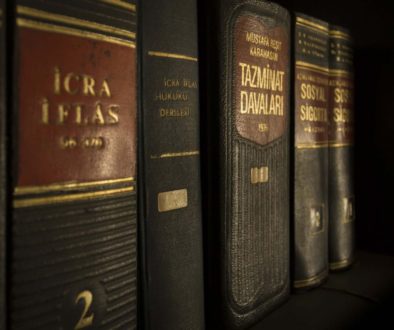A trust is a fiduciary relationship where a person (the settlor) gives/ bestows upon another person (the trustee) the right to hold title to the property for the benefit of a third party (the beneficiary). Thus, it can be used as another method of estate transfer.
Parties to a Trust
i. Settlor: This refers to the party who creates the trust by transferring his assets to the trustees. There is no legal obstacle stopping a settlor from appointing himself/herself as a trustee.
ii. Trustee(s): This is a legal person who receives the assets transferred by the settlor and is required to administer the assets for the benefit of the beneficiaries.
iii. Beneficiaries: These refer to persons entitled to use or enjoy the assets or income of the trust. A settlor cannot benefit from the trust property unless he or she is a beneficiary. However, nothing prevents a settlor from being a beneficiary.
Why Establish a Living Trust
i. To ensure the settlor’s Property is distributed as per the settlor’s wishes and to avoid family squabbles after the death of the Settlor.
ii. To avoid the lengthy and tedious probate process in court. A living trust has ownership rights over the assets held therein which assets can therefore not be distributed through the probate process.
iii. To ensure the settlor’s Property is distributed as per the settlor’s wishes and to avoid family squabbles after the death of the Settlor.
iv. To avoid or reduce inheritance or estate taxes depending on the jurisdiction of the Trust.
v. To maintain the privacy of the Settlor’s assets. The creation of a living trust protects the privacy of the Settlor since it avoids the probate process which is done in open court. As such, the assets and debts of the deceased do not become a matter of public record.
vi. Settlor’s incapacitation- In case the settlor is incapacitated during their lifetime, a successor trustee can be appointed to manage the settlor’s assets thereby avoiding family squabbles.
vii. To ensure that the Settlor retains control over his/her estate. A settlor can continue to manage the property held by the trust as if they still owned it.
Family Trusts In Estate Planning
In a family trust, the beneficiaries are only limited to relatives. A Family Trust provides continuity of the estate of a deceased person by ensuring that the estate devolves to future generations and more importantly through capable and reliable people. Therefore, a living trust and family trust often overlap since a living trust can also be a family trust.
The income and assets owned by a Family Trust are not owned outright by either the trustees or the beneficiaries. Trust assets only become the property of the beneficiaries when trustees transfer the assets from the Trust to the beneficiaries personally.
Types of Living Trusts
A living trust is a trust set up when the settlor is still alive. There are two types of living trusts namely;
Irrevocable Living Trust – Settlor cannot make any changes to the terms of the trust. It provides more creditor protection since you’re no longer considered the owner of property in the trust. The downside to irrevocable trusts, of course, is that you can’t change your mind if you ever need your assets back at some point.
Revocable Living Trust – The terms of the trust including the mode of distribution to beneficiaries can be changed during the settlor’s lifetime. People prefer to create revocable living trusts. Revocable living trusts can also be terminated in their entirety. One of the main disadvantages to creating a Revocable Living Trust is that the trust property is still considered yours and isn’t protected from your creditors or lawsuits. Also, since you’re considered to be the owner of all assets in your revocable Living Trust at the time of death, the value of your trust property may be subject to
Registration Process of Trusts in Kenya
To incorporate a Trust, one needs to:
a) Prepare a trust deed and other relevant documentation;
b) Pay stamp duty;
c) Register the Trust which can involve two stages under Registration under the Registry of Documents Act and Incorporation under the Perpetual Successions Act.
Registration under the Registration of Documents Act
The process may take 1-3weeks. Registration under the Registration of Documents Act does not make a trust into a body corporate trust yet. However, the trust can commence implementing the objects of the trust as a simple trust.
Incorporation under the Trustees (Perpetual Succession) Act
After registration under the Registration of Documents Act, a certified copy of the Trust Deed and a Petition for incorporation is lodged with the ministry of Land for incorporation of trust.
Necessary Requirements for registration of a Trust in Kenya:
a) Name of the Trust
b) Main Objective of the Trust- Education, Medical, Beneficial, etc
c) Name of the Settlor/ Donor- Full name, copy of ID card/passport; If it’s a company, a copy of the certificate of registration
d) Proposed physical address of the trust or foundation
e) Domicile and residence of the trust or foundation
f) A Trust Deed
g) Description of beneficiaries and their necessary allotments if any
h) Description of the Trust Fund
i) The Description and details of the Trustees.
j) Administration details of the Trust.


